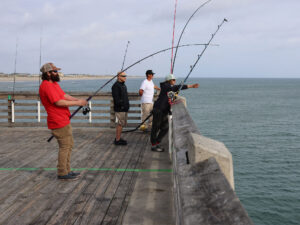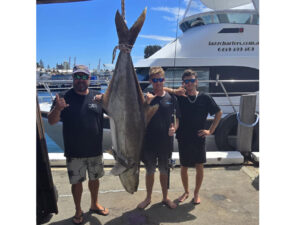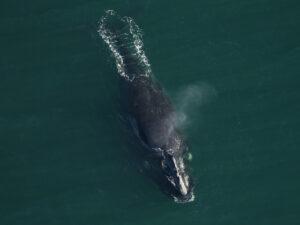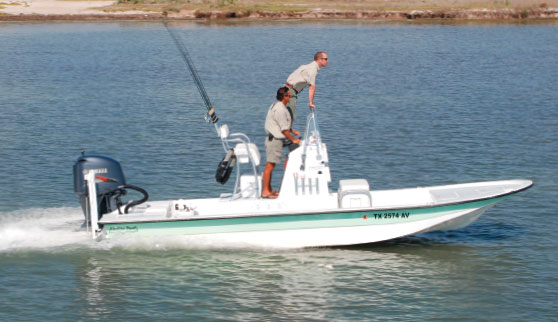
trim tabs
No other powerboats possess more shallow-water prowess than flats skiffs or bay boats. With lightweight hulls and minimal deadrise, they draw scant inches of water while remaining stable and quiet at rest. Once on plane, they literally skim the surface. Yet two systems — a set of trim tabs and a jack plate — make these boats even better for pursuing bonefish, permit, redfish and tarpon across the flats.
Trim Tabs
Consisting of twin adjustable plates attached along the stern edge of the hull, trim tabs let anglers tweak the running attitude or correct a list on any fishing vessel. Yet shallow-water fishing boats benefit even more from trim tabs, according to Charlie Johnson, director of marketing for Maverick Boat Company, which makes Hewes and Maverick flats skiffs, as well as Pathfinder bay boats.
For example, trim tabs help a boat jump on plane faster and without dragging the outboard’s lower unit on the bottom, according to Johnson. “When you accelerate from a standing start in an outboard-powered boat, the stern tends to squat,” he explains. “In shallow water, the lower unit can strike the bottom, slowing the boat, and causing the outboard to suck sand and mud into the cooling system.”
This also might damage the propeller and lower unit, not to mention the adverse effects to delicate marine habitats. However, as Johnson points out, if you deploy both trim tabs downward (before throttling up), it tends to lift the hull as you accelerate. There’s less stern squat and less likelihood of dragging bottom.
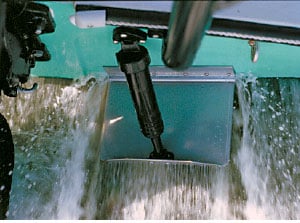
| |With a jack plate to elevate the outboard (top main photo) and trim tabs to lift the hull (above), a flats skiff or bay boat can scoot across mere inches of water.(Courtesy Bennett Trim Tabs)|
Trim tabs also allow you to reduce your speed without falling off plane. “This might be the case, for instance, when running home in the chop on a windy afternoon,” says Johnson. If you need to reduce speed to avoid a pounding, deploy the tabs downward, he advises. The tabs can create enough lift to keep you on plane at lower speeds, and can also keep the bow down a bit to better knife through the waves, according to Johnson. You can use the same technique if you need to reduce speed while running on the flats. Deploying the trim tabs will keep the hull on plane, so you’ll draw less water.
Trim tabs can also help eliminate a phenomenon known as porpoising, in which the hull alternately rises and falls in an uncomfortable and inefficient oscillation while running. With lightweight hulls and comparatively flat running surfaces, skiffs are particularly susceptible. Deploying the trim tabs downward provides a cure, allowing you to trim the outboard for optimum running attitude, speed and efficiency. However, avoid deploying the tabs too far, as that can force the bow down and cause the boat to plow. Use just enough tab to stop the porpoising.
Jack Plates
A motorized jack plate bolts to the transom, and the outboard engine bolts to the plate. A switch at the helm lets you raise or lower the outboard. One use for jack plates is idling in shallow water, a scenario in which the hull draws more water than when on plane, according to Kevin Barker, vice president for Yellowfin Yachts, which builds a 17-foot flats skiff, a 24-foot bay boat and a 21 hybrid, combining traits of both.
“Many boating anglers prefer to idle on or off the flats,” he says. Raising the jack plate elevates the outboard to keep the propeller and lower unit above the bottom. Jack plates also come in handy when it’s time to accelerate in shallow water, Barker explains. “You jack up the outboard to accelerate, and that keeps it from hitting the bottom,” he says. “As the boat climbs on plane, you can lower the outboard to ensure the prop maintains its bite as the hull rides higher in the water.
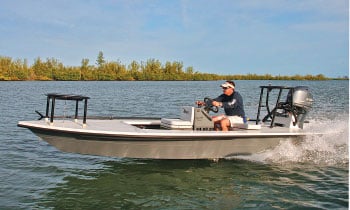
| |Skillfully using a jack plate, trim tabs and outboard trim can maximize the shallow-water performance of a tunnel-hull skiff such as Maverick’s Mirage 17 HPX Tunnel.(Courtesy Maverick)|
“This way, you don’t need to ‘spin up’ when trying to accelerate in shallow water,” says Barker. When spinning up, the helmsman turns the wheel hard over and accelerates in a circle, laying the hull on its side to angle the lower unit laterally and keep it from dragging bottom. Once on plane, you straighten your course. Spinning up takes some practice, but adding a jack plate to your skiff negates the need.
Jack plates work well with conventional flats and bay-boat hulls, but are particularly effective with tunnel-hull boats such as the Maverick Mirage 17 HPX Tunnel, according to Johnson. This design features a pocket along the centerline of the running surface beginning near amidships and carrying aft to the transom.
“This tunnel helps feed water to the prop when the outboard is elevated,” says Johnson. This not only allows the boat to accelerate strongly with the outboard elevated, but also allows you to leave it up to scoot across extreme shallows.
Johnson is quick to point out a skiff’s need for outboards with low-water pickups, as the engine might starve for cooling water and overheat with normal pickups. “Most outboards have low-water pickups today,” he points out, but advises boaters to double-check to be sure. Low-water pickups are located on the nose cone of the outboard gear case versus conventional pickups above and abaft the nose cone. “If running a jack plate, you should also have a water-pressure gauge that you can monitor to make sure the engine is getting adequate cooling water.”
Combining Systems
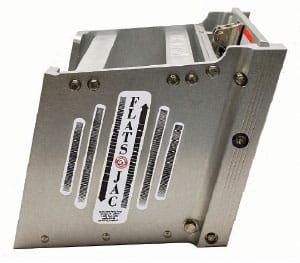
| |Bob’s Machine Shop’s Flats Jac is designed especially for flats and bay boats.(Courtesy Bob’s Machine Shop)|
Using the jack plate, trim tabs and outboard trim together can maximize the performance. To give you an idea, let’s return to the technique of accelerating in shallow water.
Put the trim tabs down, the jack plate up and the outboard trimmed in. Now throttle up. As the boat climbs out of the hole, start lowering the jack plate, raise the tabs and trim the engine out. Then, with the boat on plane, continue to apply throttle and trim to build speed. You also might raise the outboard with the jack plate to reduce drag and boost speed even further. Finally, redeploy the trim tabs a tad to control porpoising.
Each boat responds differently to tabs, engine height and outboard trim, according to Barker. “It’s really a matter of getting some seat time and using these features,” he says. “That’s how you learn.”
Bennett Trim Tabs
Deerfield Beach, Florida
954-427-1400
bennetttrimtabs.com
Bob’s Machine
Shop Jack Plates
Tampa, Florida
813-247-7040
bobsmachine.com
CMC Marine Jack **Plates **
Duncan, Oklahoma
580-252-1699
cmcmarineproducts.com
Lenco Marine
Trim Tabs
Stuart, Florida
772-288-2662
lencomarine.com
Maverick Boat Co.
Fort Pierce, Florida
888-742-5569
mbcboats.com
T-H Marine
Atlas Jack Plates
Huntsville, Alabama
256-772-0164
thmarine.com
Yellowfin Yachts
Sarasota, Florida
941-753-7828
yellowfinyachts.com

